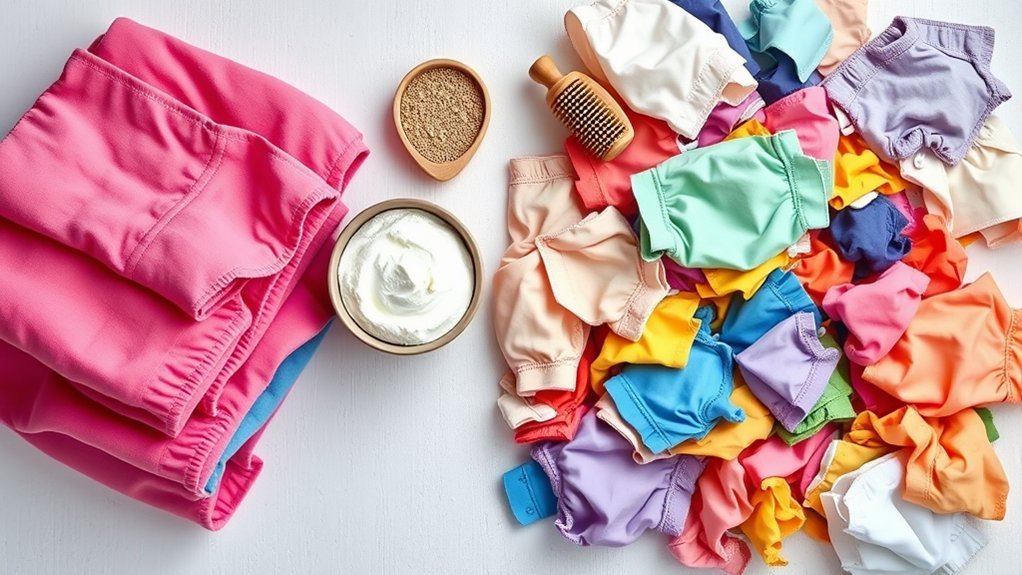When it comes to choosing between cloth and disposable products, you need to evaluate several key factors. Each option has its benefits and drawbacks that can impact your budget, health, and the environment. Understanding the do’s and don’ts can help you make informed decisions. Are you ready to uncover the essential tips that will guide you through this choice? Let’s break it down further.
Environmental Impact: Weighing the Footprint
When you consider the environmental impact of your choices, it’s clear that both cloth and disposable options come with their own footprints.
Cloth products often support sustainability practices, as they can be reused many times, reducing waste in landfills. However, their production can consume significant resources.
On the flip side, disposables may seem convenient, but they contribute heavily to plastic pollution, with limited recycling options available.
To truly liberate your lifestyle, you can seek alternatives that fit your values. By choosing cloth, you’re investing in an eco-friendly future, while also exploring recycling options for disposables when necessary.
Balancing your decisions with the planet in mind empowers you to make a significant impact and embrace a sustainable way of living.
Cost-Effectiveness: Long-Term Vs Short-Term Savings
Choosing between cloth and disposable options often comes down to understanding their cost-effectiveness over time.
Evaluating cloth versus disposable options hinges on their long-term financial benefits.
While cloth requires a higher initial investment, it can lead to significant long-term savings. Here’s a quick breakdown:
- Initial Investment: Cloth diapers or pads cost more upfront but last for years.
- Ongoing Expenses: Disposables add up quickly, with frequent purchases draining your wallet.
- Washing Costs: Consider water and energy for cleaning cloth, but it’s generally less than buying disposables.
- Longevity: Cloth items can be reused for multiple children, further spreading the cost.
Convenience: Ease of Use and Accessibility
While you might appreciate the long-term savings of cloth options, convenience plays a crucial role in your decision-making process. When you consider user preferences and product availability, ease of use becomes essential. Here’s a quick comparison to help you decide:
| Feature | Cloth | Disposable |
|---|---|---|
| Preparation Time | Requires washing | Ready to use |
| Portability | Bulkier | Compact |
| Environmental Impact | Reduces waste | Increases landfill |
| Cost Over Time | Lower | Higher |
| Comfort | Soft, breathable | Varies by brand |
Ultimately, your lifestyle will influence your choice. Whether you lean towards cloth or disposable, understanding convenience can help liberate your daily routine.
Health Considerations: Safety and Comfort
Considering your health and comfort is essential when deciding between cloth and disposable options.
You deserve to feel confident in your choice. Here’s what to keep in mind:
- Skin Sensitivity: If you have sensitive skin, cloth may be gentler than some disposable materials.
- Material Safety: Check for certifications in both options to verify they’re free from harmful chemicals.
- Breathability: Cloth often allows for better airflow, reducing irritation during extended wear.
- Allergy Risks: Disposables might contain substances that trigger allergies; choose hypoallergenic options if you go this route.
Ultimately, prioritizing your health and comfort will lead you to the right decision.
Embrace the freedom to choose what makes you feel your best!
Maintenance and Care: Cleaning and Storage Solutions
When it comes to maintaining your cloth or disposable options, proper care is essential to guarantee hygiene and longevity.
For cloth items, use effective washing techniques like hot water and a gentle detergent to eliminate bacteria and odors. Avoid fabric softeners, as they can reduce absorbency. Once clean, dry them thoroughly to prevent mildew.
Effective washing of cloth items with hot water and gentle detergent is crucial for hygiene and absorbency.
For storage options, keep your cloth products in a dry, cool place, ideally in breathable bags to maintain freshness.
If you’re using disposables, store them in a cool, dry area to preserve their integrity.
Frequently Asked Questions
Can Cloth Diapers Cause Allergic Reactions in Babies?
Yes, cloth diapers can cause allergic reactions in babies. If you notice allergy symptoms like redness or irritation, it might lead to diaper rash. Always check materials and wash them properly to minimize risks.
How Often Should I Change Cloth Diapers?
Change cloth diapers every two to three hours, balancing comfort and cleanliness like a dance. Establish a washing routine to keep them fresh and free from odors, ensuring your little one feels liberated and happy.
What Is the Lifespan of Reusable Cloth Diapers?
Reusable cloth diapers typically last 2-5 years, depending on durability factors like fabric quality and usage. To maximize their lifespan, follow maintenance tips such as regular washing and avoiding harsh detergents. You’ll appreciate the savings!
Are There Any Eco-Friendly Disposable Options Available?
Yes, you’ll find eco-friendly disposable options! Look for diapers made from biodegradable options and compostable materials. These choices help reduce waste and lessen your environmental impact, giving you peace of mind while caring for your little one.
How Do I Choose the Right Cloth Diaper Style?
Choosing the right cloth diaper style can feel like picking a winning lottery ticket! Consider fabric types like cotton, bamboo, and hemp, and explore styles like all-in-ones or pockets to find what suits you best.
Conclusion
So, whether you’re team cloth or team disposable, remember: saving the planet and your wallet can be a balancing act worthy of a circus performer. Sure, you could toss your money into the landfill with disposables, or you could invest in cloth and do laundry like it’s an Olympic sport. Just make sure to keep those cloths clean and those disposables intact, or you might find yourself in a sticky situation—literally! Choose wisely, and don’t forget to laugh a little!
